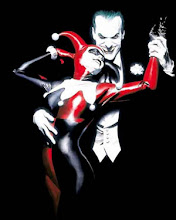We worked on foxtrot routine today. There are a few technique that was mentioned today.
1. In feather step, and in the synchopated feather, instead of thinking left side forward, think right side backward, this helps to move and give my partner space to move. My goal in feather step is to not let partner pass me.
2. Don't force the movement/technique with muscle. Have just the right amount of relaxation. Absorb like water, think ghost in a dress.
3. Think of the steps before doing it. Visualize the steps with the count before doing it. Only after you know what to do (timing, footwork, steps), will you be able to relax and do it with the right amount of relaxation. (It feels like i need to be active in the mind to know what to do, then do it with the right amount of relaxation)
4. on the spin turn after the tipple chasse, need to rise on the 3 of the 3234.
5. Count the three fall away as three numbers in a group, to seperate the first and second fall away. (i.e. 623, 472)
6. In the second fall away, lower more between the 34 of 623,472. 4 is a heel lead for me.
5. Head positions:
a. turn head right at the reverse pivot after the QQQ feather.
b. remember to open head to right on the reverse feather.
c. three fall away, the first one need to turn head to right,
d. rounde can turn head to the right, but the same foot lounge need to turn head back to left.
1. In feather step, and in the synchopated feather, instead of thinking left side forward, think right side backward, this helps to move and give my partner space to move. My goal in feather step is to not let partner pass me.
2. Don't force the movement/technique with muscle. Have just the right amount of relaxation. Absorb like water, think ghost in a dress.
3. Think of the steps before doing it. Visualize the steps with the count before doing it. Only after you know what to do (timing, footwork, steps), will you be able to relax and do it with the right amount of relaxation. (It feels like i need to be active in the mind to know what to do, then do it with the right amount of relaxation)
4. on the spin turn after the tipple chasse, need to rise on the 3 of the 3234.
5. Count the three fall away as three numbers in a group, to seperate the first and second fall away. (i.e. 623, 472)
6. In the second fall away, lower more between the 34 of 623,472. 4 is a heel lead for me.
5. Head positions:
a. turn head right at the reverse pivot after the QQQ feather.
b. remember to open head to right on the reverse feather.
c. three fall away, the first one need to turn head to right,
d. rounde can turn head to the right, but the same foot lounge need to turn head back to left.
